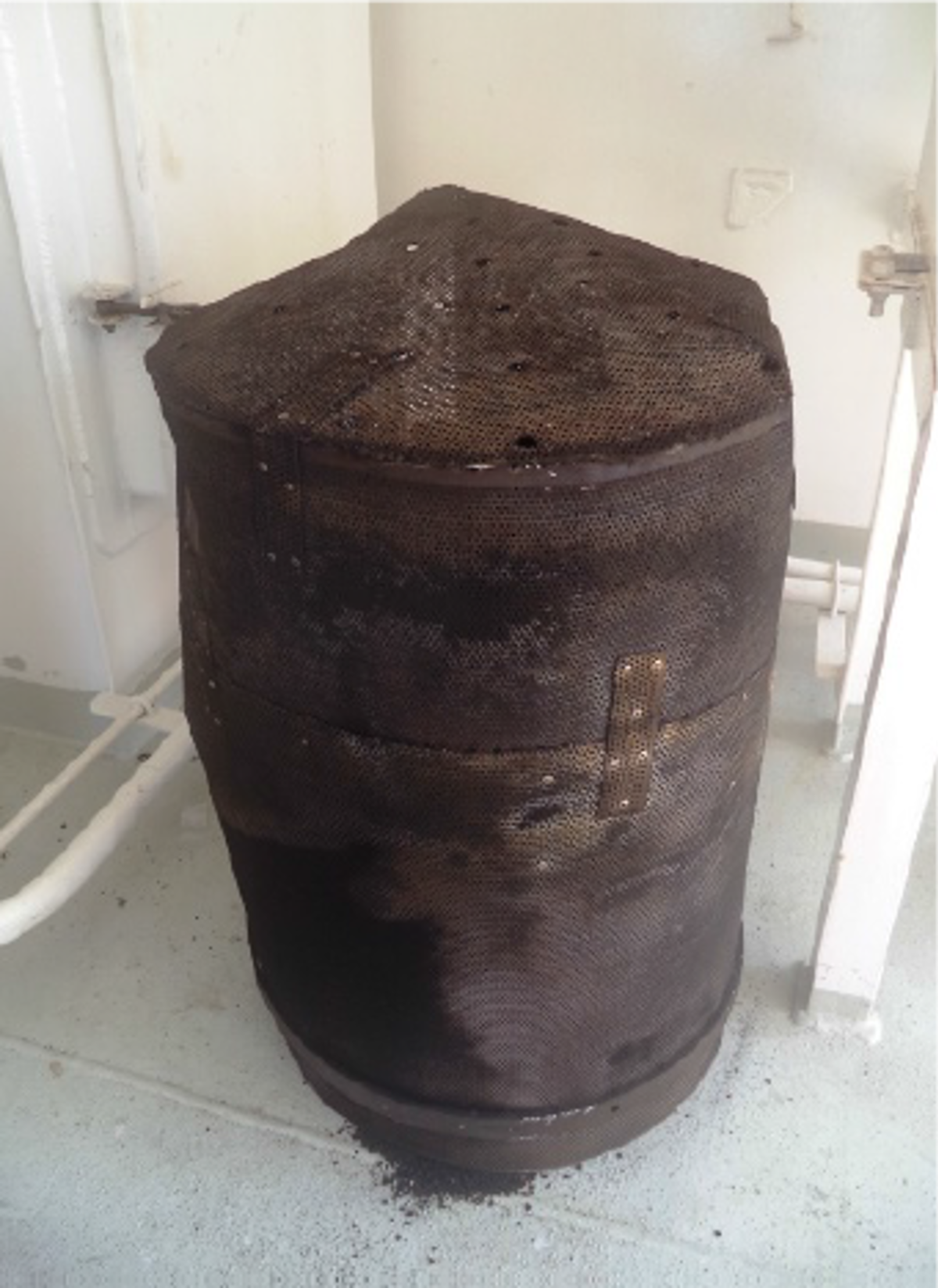High potential near miss: dropped object – spark arrestor
- Safety Flash
- Published on 20 February 2018
- Generated on 15 July 2025
- IMCA SF 04/18
- 2 minute read
Jump to:
An 18kg spark arrestor fell 16 metres from the funnel stack and landed on the FRC deck.
What happened?
No-one was injured but this was considered a serious near miss. The spark arrestor was installed at the direction of the charterer only days before the incident. It was installed by a third-party sub-contractor; it was a requirement for working in the field and was new to the vessel.

What went wrong?
- The spark arrestor became dislodged due to exhaust pressure and vibration.
- The clamp was not secured tightly enough.
- The mechanism of securing was pop rivets.
- Vessel management did not manage the quality control of the third-party work when the spark arrestor was installed.
What were the causes?
- A causal factor was:
- installation (fixing) of the spark arrestor was not adequate or to industry standards and not quality checked by the vessel crew or management.
- Root causes were:
- failure of vessel operator to conduct a management of change (MoC) process for spark arrestor being installed.
- the vessel operator did not follow contractor management procedures as the third-party installer was not contracted by the vessel.
What lessons were learnt?
- There should be a management of change (MoC) process applied to all significant modifications or additions to vessel plant and equipment. This should include quality control to verify installation meets industry standards.
- Contractor management principles still apply even if there is no actual contractual relationship between the vessel operator and the third party doing the work.
What actions were taken?
- Review and update of safety management system (SMS) documentation (management of change (MoC) and Contractor Management processes) to ensure this scenario involving third parties is properly dealt with.
- Additional MoC training provided to vessel management teams.
Members may wish to refer to:
Related Safety Flashes
-
IMCA SF 23/17
21 September 2017
-
-
IMCA SF 10/15
16 July 2015
IMCA Safety Flashes summarise key safety matters and incidents, allowing lessons to be more easily learnt for the benefit of the entire offshore industry.
The effectiveness of the IMCA Safety Flash system depends on the industry sharing information and so avoiding repeat incidents. Incidents are classified according to IOGP's Life Saving Rules.
All information is anonymised or sanitised, as appropriate, and warnings for graphic content included where possible.
IMCA makes every effort to ensure both the accuracy and reliability of the information shared, but is not be liable for any guidance and/or recommendation and/or statement herein contained.
The information contained in this document does not fulfil or replace any individual's or Member's legal, regulatory or other duties or obligations in respect of their operations. Individuals and Members remain solely responsible for the safe, lawful and proper conduct of their operations.
Share your safety incidents with IMCA online. Sign-up to receive Safety Flashes straight to your email.